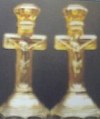Carnival Glass 101 | home Quick Reference to Carnival Glass Patterns on This Site
Dugan, Diamond and Newer Vases
DUGAN, DIAMOND, & Newer Vases
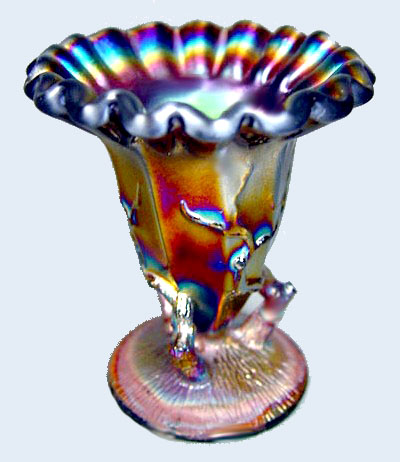
TINY TWIGS with CRE crimp.
TINY TWIGS – Amethyst - Known to have been manufactured by Dugan Glass Co. in this very rare tight crimped style, along with another tightly crimped edge in the Jack-in-the-Pulpit flare, along with the more standard type tri-corner top. Marigold has been “reported” as a color, but during our more than 30 years of attending auctions all over America and reading dozens of major auction brochures, we have never seen, nor heard of one, leading us to believe that deep amethyst is the only authentic “old” color in carnival glass.
Depending upon the shape of the top, sizes can range from 3 ½” to 5” in height. 1909-1910 are likely dates for iridescent production. Their extreme scarcity indicates production to have been rather brief. During a five year span of carnival glass auctions, collectors should feel fortunate if one of these vases makes an appearance! There are not many to select from.
This vase should not be confused with the much taller, thinner marigold example later produced by Diamond Glass Co.
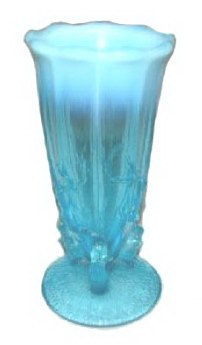
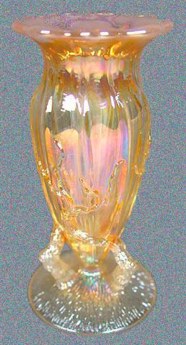
Left - Newer version Tiny Twigs in Blue Opalescent.
Right - Newer version of TINY TWIGS
TINY TWIGS in blue opalescent: This color was a carry-over from earlier opalescent production. An April 1906 Butler Brothers catalog and the 1907 Dugan factory catalog carry ads for these opalescent pieces.
Terry Crider has owned this Tiny Twigs mold. At least some of his reproductions carry his signature. (If you will click here, you can read the report on use of this mold.)
The example shown here appears to be one from “later” years. The application of opal on newer pieces does not correlate to that which appeared in the vintage glass. Application of the opal seen in vintage examples indicates more expertise than in the “blobs” observed on newer glass.
This marigold Twigs appears to be a newer version.
RE: TINY TWIGS in peach opalescent ??: Please go to our earlier material found by clicking here concerning this color! This vase appeared in the 2007 ACGA auction, coming from a “seasoned” collection. We must assume that those collectors were “taken in” by “convincing circumstances” or failed to do the necessary homework surrounding true vintage production of this vase. The late John Britt said it ALL many years ago when presented with the option to purchase one such as this: “They never MADE this color in the old vases!”
Blue Opal would fall into the same category. Vintage TINY TWIGS examples are known in Amethyst. If vintage marigold vases are known to exist, we have not seen a single example during our more than 35 years of close contact with all kinds of old carnival glass. Dozens of auctions pass without evidence of their existence.
As time marches on, molds become scattered around the world, getting into the hands of those producers who do not honestly mark their reproductions. New collectors coming into the hobby must rely on the knowledge extended by long-time collectors OR on early written statements surrounding much of what comes to sale today! Although you may be attracted to newer carnival glass, paying the “appropriate” price and knowing its origin is very important.
(Reportedly, this P.O. vase stirred up so much controversy among attendees, that it was withdrawn from the auction.)
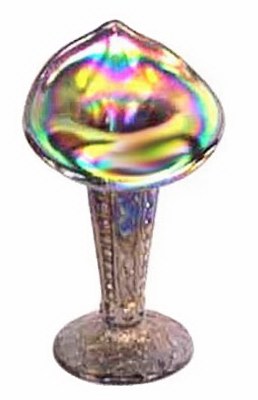
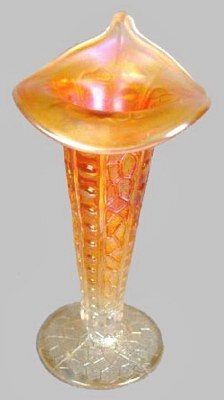
Left - FORMAL Vase in Purple.
Right - 7.5 in. JIP FORMAL Vase.
FORMAL: The mold shape of this Dugan pattern has a cupped-in top and is considered by collectors to be a hatpin holder. The JIP flare changes their purpose to a vase. In either stance, they are quite scarce! Purple is seen more often than marigold. (We once owned an example in the hatpin holder which could only be considered “black amethyst”.)
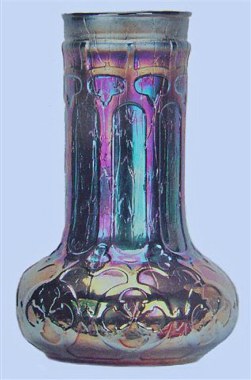
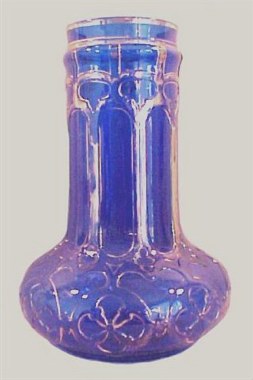
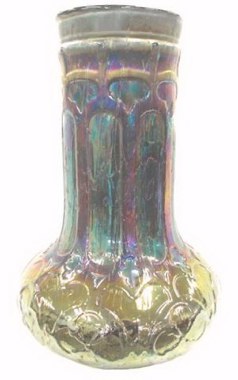
Left - 12 in. FILIGREE Vase. Sold for $3500. on Jan. '07- Wroda Sale.
Middle - Cobalt Blue from the 1907 FILIGREE line of Dugan.
Right - FILIGREE Vase - sold in Reichel Sale.
FILIGREE: Cobalt blue was a color produced in this early Dugan mold, prior to the carnival glass era. The pattern is thought to be the first carnival glass item offered by Dugan in purple base glass. When the first example surfaced in a 1993 Burns auction, the resultant price was $5,250. Since that time a few other vases have come to light.
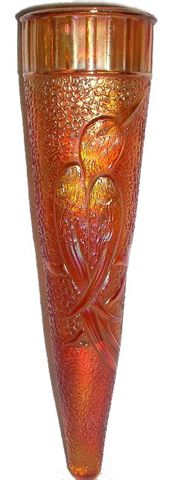
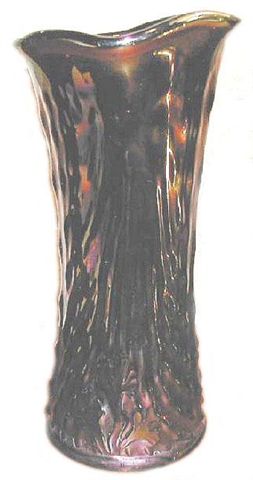
Left - WOODPECKER Wall Pocket - 8 1/4 inches tall.
Right - 6 inch NAUTILUS Vase in Purple.
Thanks to Annette Merriman for the picture!
WOODPECKER Wall Pocket: Is a late pattern, dating from the early to mid ‘20s, placing it in the production of Diamond Glass Company. Since fragments of the design were found in the Helman diggings in Indiana, PA, there is little doubt of the origin of this cone-shaped wall vase. Marigold is the only known color and is often rather light in tonal quality. There are some good rich examples to be found if you care to search a bit.
NAUTILUS: Many of these Dugan vases offer an indistinct pattern because they were swung from a tumbler-shaped piece. No tumblers in the pattern were iridized. It offers a 2 1/2” base, with heights ranging from 6”-9”. Marigold is seen less often than purple, but then neither presents itself with any regularity.
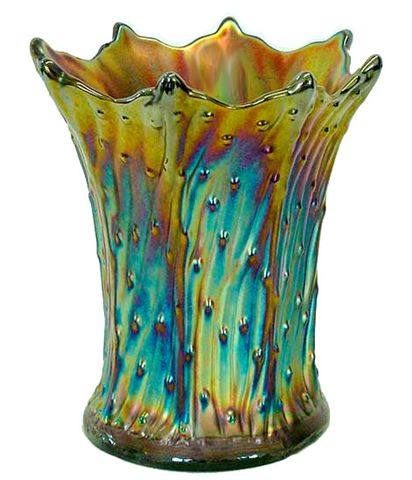
7 inch PANELED TREETRUNK - Dugan.
Has a 5 inch base - Sold for $3150. in 7-10
PANELED TREE TRUNK: So few of these vases exist, that many collectors are never given the opportunity to examine one. It is a beautifully refined pattern found in 6”- 9” sizes. Marigold, amethyst, peach opalescent, and green are the reported colors. Just where these vases are remains as much a mystery as to precisely who the maker was?
General outline of the top edge is similar to the Target vases and offers the same general “three-point slope” seen on the Lattice Hearts bowl, leading to Dugan as the manufacturer. Reported colors also lead to Dugan origin; very likely in the 1910 time period. If this mold was a casualty of the 1912 fire, it would perhaps explain the extreme scarcity of these vases today.
We must say, that dating from our beginning search into carnival glass in 1968, we had never been treated to more than one “sighting”- the purple 7” example seen here. It sold in 2002 for $5,250!
Then, while attending the June 2008 ACGA Convention in Dayton, OH, a Paneled Tree Trunk vase was for sale in one of the rooms for a tidy $15,000!
UPDATE: The example sold in the July 2010 ICGA Convention auction conducted by Jim Seeck in Clarksville, Indiana brought $3,150.
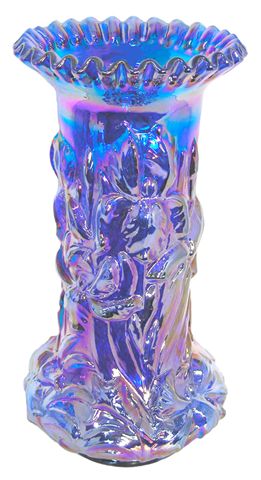
HEAVY IRIS Vase in Blue
12.5 in. tall, made for Singleton Bailey.
HEAVY IRIS: Essentially one of the most beautiful of all water sets, in its original, intended shape, Dugan outdid itself with a magnificent design on this one. We will discuss that aspect in a coming Dugan Water Set segment.
The water sets were reproduced by Westmoreland for the L.G. Wright Company of WV in 1979. The original molds were used but some slight changes were made. The pitcher has a 2 1/2 inch plain band under the ruffled top edge. The tumblers look nearly indentical to the old.
A new handled basket in red and electric blue carnival were made by Gibson in 1987, and are so marked on the base.
Fenton Glass Company attained the molds and have produced the vase you see here, for Singleton Bailey. How many colors there are, we are not certain about at this point in time. As with the Poppy Show vases produced for Singleton, the range of colors progresses over an extended period of time, based on sales demand.
Dean & Diane Fry – 9-10
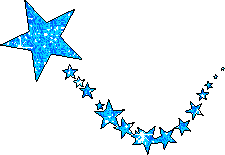




Today our culture is just as hostile and opposed to Jesus as when He first asked the question:
“Who do men say that I, the Son of Man, am?”(Matt.16:13).
As in Jesus’ day, people offer a long list of inadequate and incorrect ideas about Jesus,
Ranging from “just a good teacher” all the way to “divisive” and “intolerant.”
The real question was and continues to be: “Who do you say that I am?” (16:15).
Peter boldly declared, “You are the Christ, the Son of the living God” (V.16).
Jesus said that Peter’s accurate confession was a God-given insight
and that he was blessed because of his declaration. (v.17)
Your life will be bolstered and blessed in joining Peter in confessing that Jesus is your Savior.
Whoever believes that Jesus is the Christ is born of God. 1 John 5:1





Should you care to contact the Frys, their email address is:
Search Carnival Glass 101
back to Carnival Glass 101
Our other sites you may enjoy:
Everything you EVER wanted to know about Indiana Glass
Great Reference for Newer Carnival Glass.
Complete Glassware Catalogs Available to Download
Questions? Comments? Suggestions? Broken Links? Corrections?
Your Friendly Webmaster is here to help!
